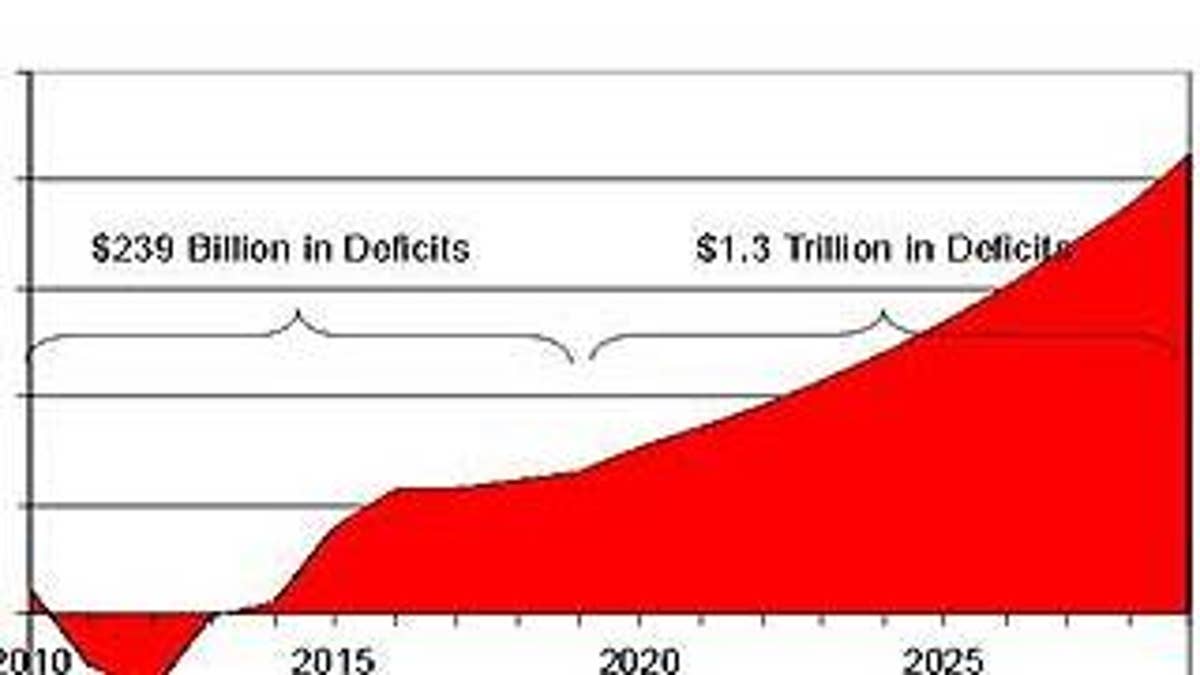
President Obama says he will not sign a health care reform bill that adds to the deficit but GOP number-crunchers argue he will do just that if House Democrats continue their sleight-of-hand in calculating the long-term costs of their proposal.
The Congressional Budget Office has estimated the proposal now under consideration will cost over 10 years a little more than $1 trillion, depending on the final deal. House Democrats have vowed to find a way to pay for that cost despite an acknowledgement by a Congressional Budget Office official that the deficit will increase $239 billion because of Medicare payments to doctors.
But fully phased-in coverage of Americans under the plan will only occur for six of the 10 years measured by the CBO. That's because the Democratic plan in the House will start collecting revenues in 2011 but won't start providing coverage until 2013 and won't be fully implemented until 2015.
According to an analysis by Republican staff of the House Ways and Means panel, the deficit from the health care reform bill would be $760 billion by 2024, the end of the first 10 years of full benefits coverage. It would be $1.6 trillion by the end of the 2020s.
The Republican projection takes the CBO estimates beyond the 10 years the agency is restricted by law from projecting and shows that while the program will cost about $1 trillion between 2011 and 2019, it will cost $2.2 trillion between 2015 and 2024, not counting offsets to reduce the cost.
Put another way, by 2019 the House proposals will be adding $65 billion a year to the deficit, even with all the revenue raisers Democrats are now proposing. The amount of deficit spending will continue to increase after 2019, which would mean Congress is creating another entitlement.
Another congressional source said deficits are "substantial and persistent."
"Longer term projections performed by congressional staff show annual deficits ranging from $50 billion to $250 billion a year depending on growth estimates," the source said.
That is not the only financial problem in the health care reform calculation. Since the CBO said the House plan does not lower costs -- and actually increases them -- Congress has to come up with money to offset the cost of the first 10 years, which is proving to be a political nightmare because every source of money creates its own set of political and economic problems.
For instance, one of the ways the House is raising funds to offset the cost of the health care reform is by "saving" some $380 billion from Medicare spending, according to the CBO.
But Medicare is already on the brink of collapse. Medicare Part A has $38 trillion in unfunded liabilities. Any savings from Medicare would likely be used to help prevent its own financial problems.
The Medicare Trust Fund also will not have enough money to pay its bills in 2017, just four years into the new reforms and yet no provision has been made to fix that. In fact, Medicare will need another $228 billion just from 2017 to 2019 to pay for promises already made by the federal government.
House Democrats say many savings will be realized by the reduction in illnesses as a result of preventive maintenance. However, that savings can't be measured by any existing scale because it's impossible to know what uninsured illnesses would be treated in the future.
Click here for the graphs demonstrating the impact of the Democratic health care reform proposal.




